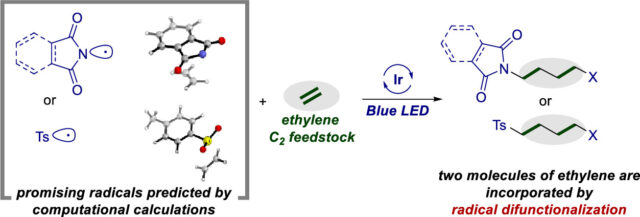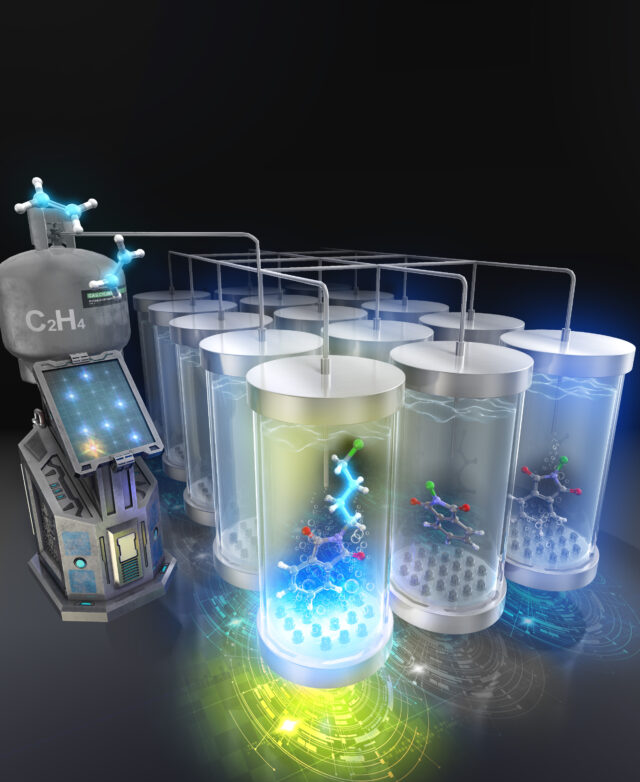Researchers at ICReDD have reported a unique difunctionalization of ethylene gas, aided by theoretical predictions obtained using the Artificial Force Induced Reaction (AFIR) method. Prior to any synthetic chemistry experiments in the lab, the reactivities of various radical species towards ethylene were calculated systematically by the AFIR method. The results suggested that the addition of nitrogen- and sulfur-centered radicals to ethylene would proceed efficiently.
Based on these calculation results, researchers developed a photocatalytic radical difunctionalization reaction involving the incorporation of two molecules of ethylene into the substrate while under the irradiation of blue LEDs. Ethylene gas is produced in large quantities worldwide and most commonly used to make the plastic polyethylene, but radical difunctionalization of ethylene has remained very limited. This research has shed light on new type of reactivity that could lead to new uses of ethylene.
More information can be found in the paper by H. Takano, Y. You, S. Maeda, and T. Mita et al. (DOI: 10.1021/acsomega.1c05102).



